Birds (and big cats) of paradise: Sri Lanka is best known for its elephants – but wildlife of a different kind is the real attraction
You may have never thought about going to Sri Lanka for bird watching, but it’s always a good idea to follow the advice of the locals, even the old ones.
About 5,000 years ago, at what is now the prehistoric cave art site of Kurullangala, an unknown artist sketched the native peacocks. The images are so accurate that it’s clear that birdwatching on this Indian Ocean island has been in vogue for a long time.
And the peacocks are still there. Their incessant crowing, forever a reminder of an urgent announcement over a public address system, is ubiquitous – I even heard them during the climb to Sigiriya Rock, often called the Eighth Wonder of the World.
This is the peacock’s native domain, but they still look incongruous; their plumage is a little too elaborate, like a poorly judged costume for an awards ceremony.
But they are among the most obvious of a wonderful array of exotic birds that, if not enough in themselves to tempt you to this rural island, will certainly enhance your experience.
Dominic Couzens went on a birdwatching tour of Sri Lanka, checking into eco-friendly hotels and lodges in between visits to rainforests and national parks. Above is Rosyth Estate House in Kegalle, near Colombo – one of the stops on his route
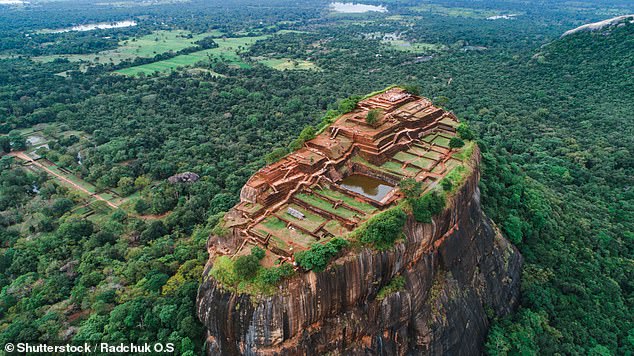
Dominic heard the crowing of peacocks while climbing to Sigiriya Rock (above), often called the Eighth Wonder of the World
Sri Lanka has had difficulties in recent years. A long civil war was followed by the Boxing Day tsunami of 2004, a terrorist attack in 2019, the Covid pandemic and an economic collapse in 2022. But through it all, the country remains friendly, safe and optimistic, and equally extraordinary for nature as it has always been. You can do the country a favor – all types of tourists are welcome.
I visited the island for two weeks in June and traveled around the island with a wonderful guide, Manoj Kumara, from Jetwing Eco Holidays.
Kumana National Park is one of the best places in the world to see a wild leopard and a sloth bear – but in one day I saw more than 80 species of birds, with beautiful names like common iora, purple sunbird, paradise flycatcher and many more . drone with racket tail.
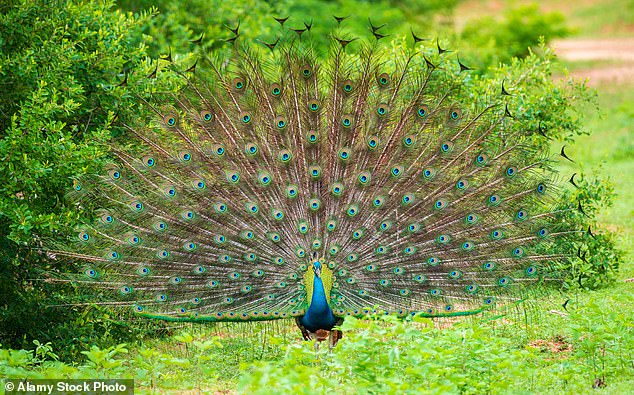
Show stopper: The peacock is one of a ‘wonderful array of exotic birds’ native to Sri Lanka
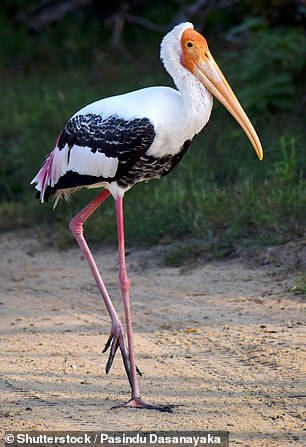
Fantasy: Dominic saw a painted stork in Wilpattu National Park
And at the end of that same day, I was sipping a gin and tonic at the luxurious Jetwing Surf Hotel while an Asian green bee-eater – a gloriously sleek aerial gymnast with impeccable supermodel make-up – continued to distract me with his insect-grabbing flypasts in the garden. If ever a bird knew it was beautiful, it was this one. “Oh, look at me,” it seemed to say.
I did manage to spot a leopard in the wilderness-like Wilpattu National Park in the northwest, but it was as grumpy as a Hollywood diva on a bad day. Does not matter. It lurked near a lakeside teeming with birds.
There were painted storks, blushing red and pink like overweight flamingos; stilts with black wings and Barbie pink legs; white-bellied sea eagles; flashy purple herons and kingfishers – so many kingfishers in different shades, like a paint sample in a DIY store. So as the leopard watched, sitting on the ground, all the glory shone around him.
At dinner that evening, at the eco-friendly Thamaravila Resort, al fresco dining was accompanied by the call of Jerdon’s nightjars and a warning that we might need to steer clear of a wandering elephant.
Sri Lanka offers one thing in particular that is exceptional for a major safari destination. This became clear to me one morning as I was relaxing at the enchanting Rosyth Estate House in Kegalle, near Colombo. The morning chorus, watching and listening from the roof, was full of unique voices – the ‘tock, tock, tock’ came from the yellow-fronted bird; the rolling screech of the Sri Lankan drooping parrot; the course of the Sri Lanka green pigeon. None of these birds are found anywhere else in the world.
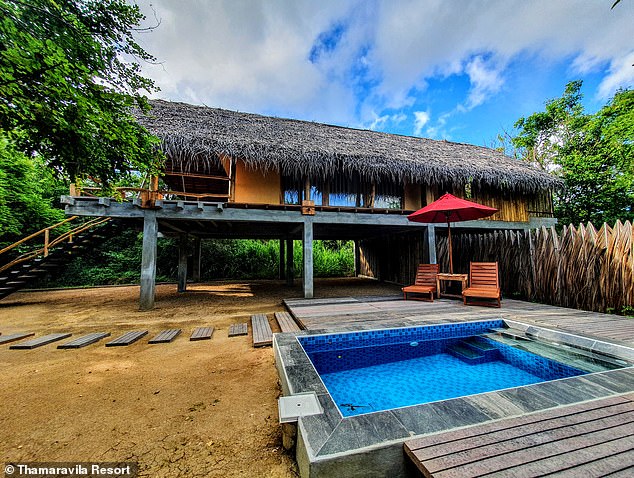
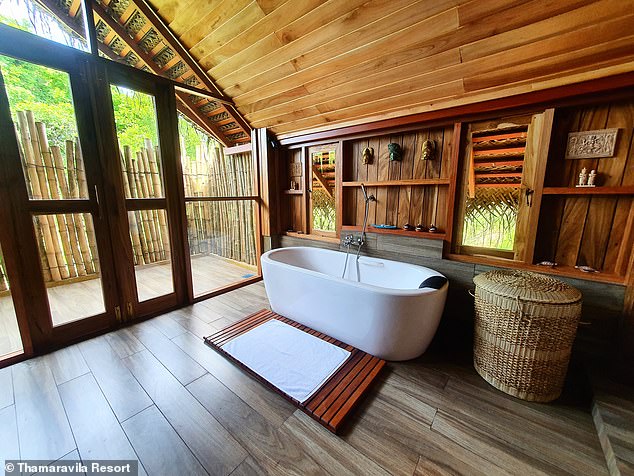
Dominic listened to the calls of Jerdon’s nightjars while dining al fresco at the eco-friendly Thamaravila Resort (shown in the two images above)
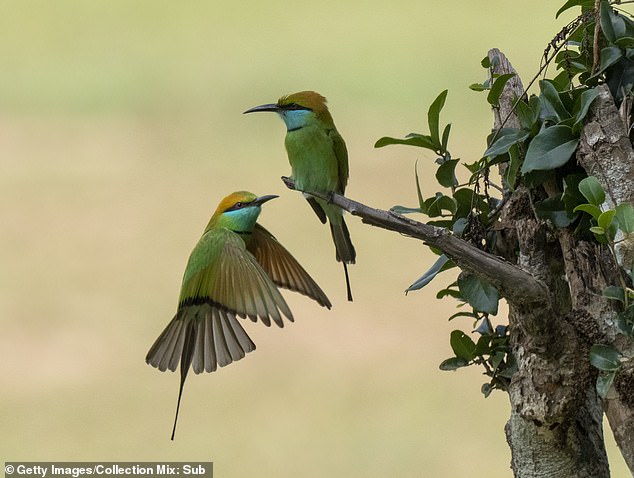
At the Jetwing Surf Hotel, Dominic sipped a gin and tonic in the company of an Asian green bee-eater (photo, stock photo)
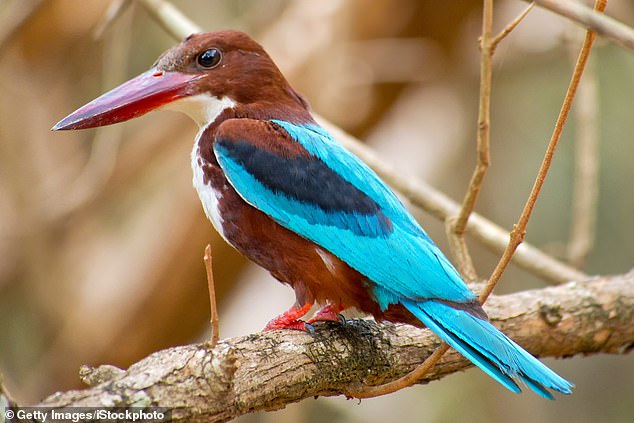
In Wilpattu National Park, Dominic saw ‘so many kingfishers in different shades’. Above you see a white-throated kingfisher in the park
In total there are 33 bird species unique to Sri Lanka. If you want to see them all, there’s one place to go: the Sinharaja Rainforest in the south. This UNESCO World Heritage Site is a treasure trove (even the venomous snakes are unique, making for a potentially impressive epitaph) filled with enormous flocks of birds that are among the largest and most varied in the world.
Here you’ll find the garrulous Sri Lanka Drongo, which can imitate all other birds, and the showy Sri Lanka Magpie, which goes out of its way to endear its relatives with its lush blue, brown and red coloring.
I stay at Martin’s Lodge, nestled in dense forest, and the magpie visits the veranda to feed, along with the Sri Lankan gray hornbill. With a good guide you can even find the Serendib Scops Owl, which was only discovered in 2001.
An exclusive additional group can be found in the Central Highlands, including the excitingly rare Sri Lanka whistling thrush and the Sri Lanka wood pigeon. The latter, more enticing than it sounds, made for a happy dance in Horton Plains National Park, where we had a very close encounter with a leopard. ‘I might die for a whistling thrush,’ I thought, ‘but not for a pigeon.’
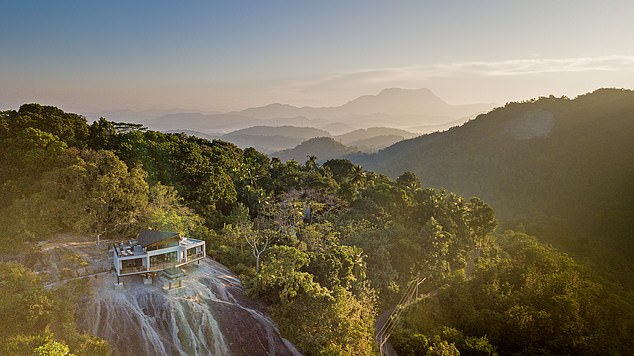
While relaxing at the enchanting Rosyth Estate House (above) one morning, Dominic heard a morning chorus that was ‘full of unique voices’ – including the rolling screech of the Sri Lankan hanging parrot.
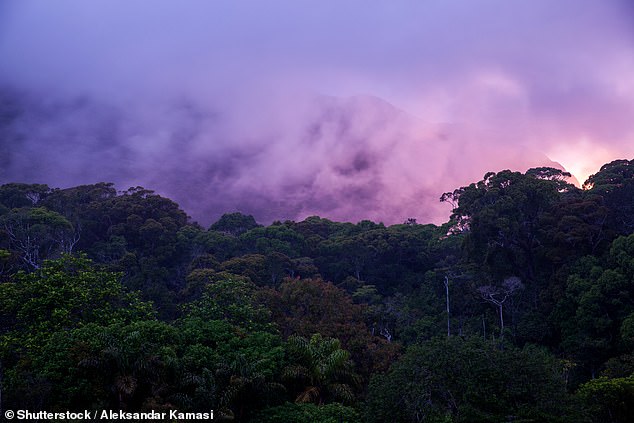
‘A total of 33 bird species are unique to Sri Lanka. If you want to see them all, there’s one place to go: the Sinharaja Rainforest (above) in the south,” writes Dominic
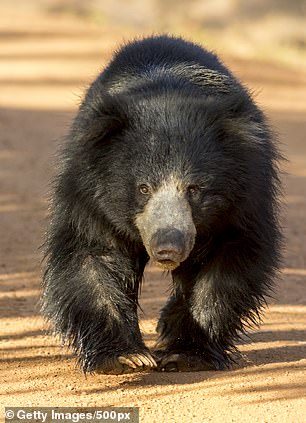
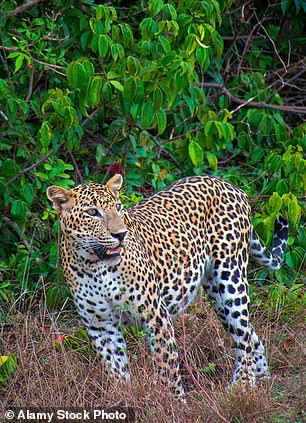
Kumana National Park is one of the best places in the world to see a wild leopard (right) and a sloth bear (left), reveals Dominic
The best trips obviously involve some danger (and not just leopard danger). In Sinharaja you will battle leeches who show intense but unrequited desire, so don’t forget your leech socks. This is a fantastic, albeit rustic, location, a place for those who really want to see birds.
I also never expected to be stuck on a boat during a thunderstorm. The island’s only non-sea boat tour with a wildlife theme can be taken in Gal Oya National Park, in the center of the island.
This is one of the few places in the world where visitors regularly see Asian elephants swimming from island to island, and it is also home to a significant colony of waterfowl. During my visit, the clouds were piling up, the rain was coming down in torrents and the elephants were running into the forest for cover.
Sri Lanka is beautiful, but not everything is charmed. The local rooster, the Sri Lankan ruffed fowl, crows with a dissonant flavor, a hideous sound that rasps and clatters across the island. We can thank our lucky stars that it was the continental rooster, the red jungle fowl, that became the world’s early morning alarm clock, and not this talentless no-hoper.
